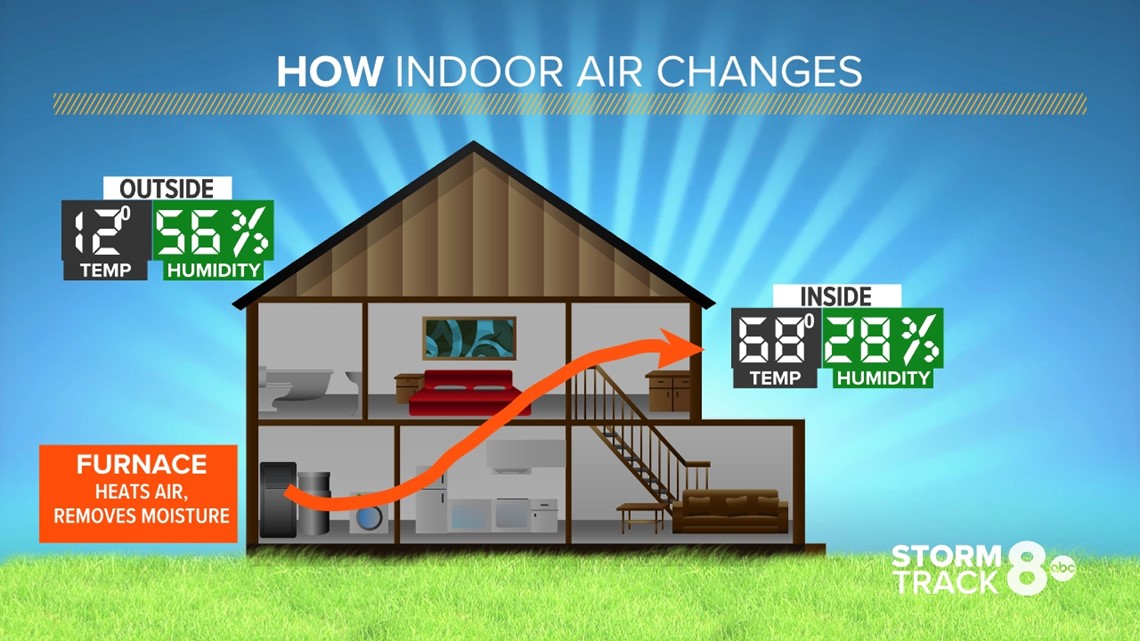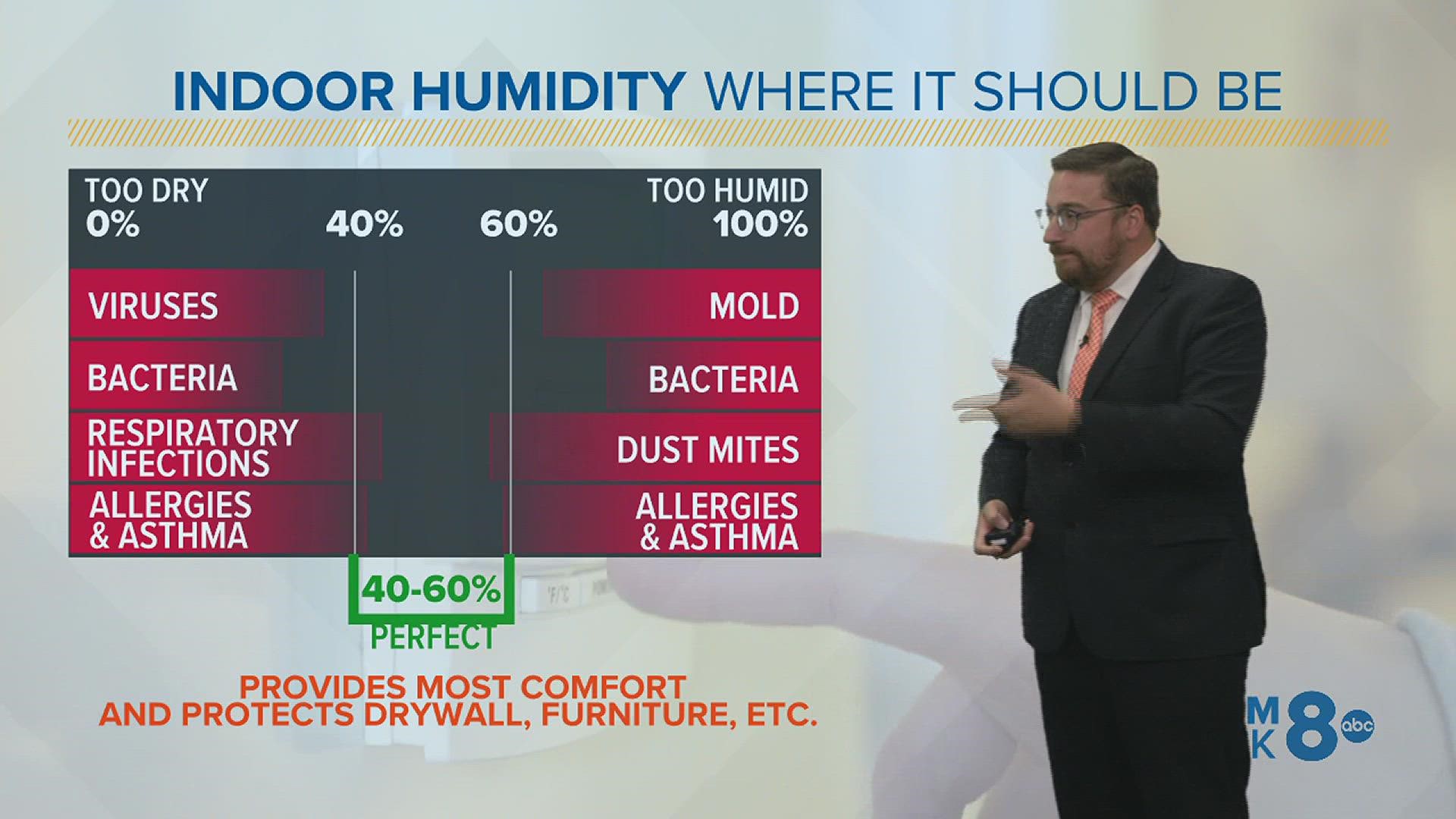MOLINE, Ill. — Many of us have switched on the furnace for the first time this fall season and that's a trend that will likely continue heading into the remaining weeks of October. With each passing day, the sun's energy is steadily decreasing which leads to our average daytime temperature steadily falling through the end of the year. However, as we heat our homes, we are not only modifying the temperature, but we are also modifying the level of moisture in the air, too.
What should our indoor humidity levels be while the furnace is running?
Humidity during the winter months is never really a problem when it comes to the air outside your home. There is usually plenty of it as the dew point temperature nears the actual air temperature. Remember, when both these values are the same, relative humidity is 100%. However, indoor air is quite different.


Let's look at the example above. The relative humidity outside is well in the 50s, while the humidity inside is at a very dry 28 percent. The reason? As your furnace heats the air, it is also drying the air out at the same time. That can cause the outdoor air with relative humidity in the 50s to drop as low as the 20s. Very dry! Your skin will be the first indicator of how much humidity is left inside your home after this process. If you don't have a strict moisturizing routine, you'll notice your skin begins to quickly dry out and becomes itchy. The wood furniture in your home will also begin to dry out as well, and possibly crack.
Adding a humidifier to your home has many benefits, including some health benefits, too! However, make sure you are keeping a close eye on the humidity levels because too much moisture can have a negative impact on both your health and your furniture.
You'll want to keep the indoor humidity level between 40 and 60 percent. Anything higher than this can breed mold and bacteria. Meanwhile, air that is too dry can support viruses, even causing the inside of your nasal passages to dry out, making you more vulnerable to cold and flu viruses, too.


A quick test to measure air moisture without using a hygrometer (a device that measures humidity levels)
- Place a few ice cubes into a glass of water and stir.
- Wait three to four minutes.
- If you see moisture forming on the outside of the glass, the humidity may be too high. If there is no moisture forming, the humidity is too low.
*It's best to perform this test in a room other than the kitchen. Vapors from cooking could skew the test results.
Have a question that you would like me to answer for an upcoming Ask Andrew story. Submit it, here.
Watch more news, weather and sports on News 8's YouTube channel

